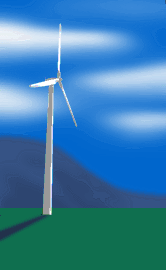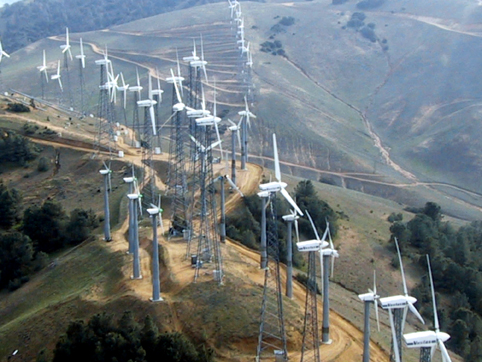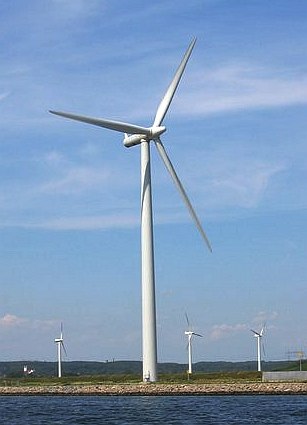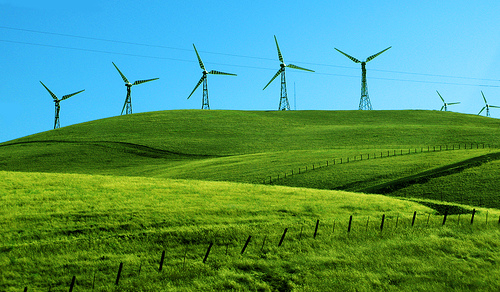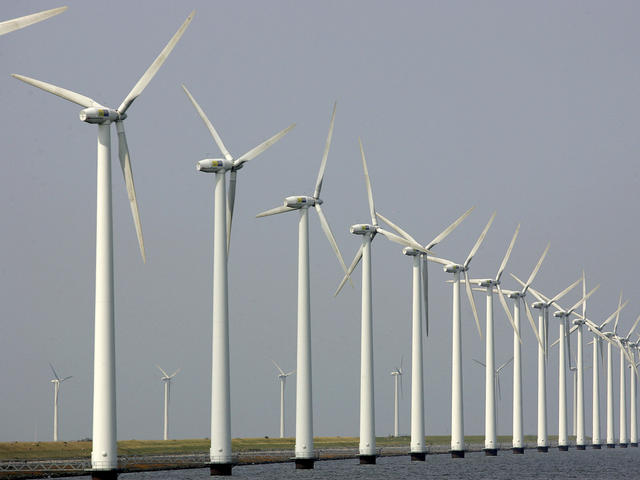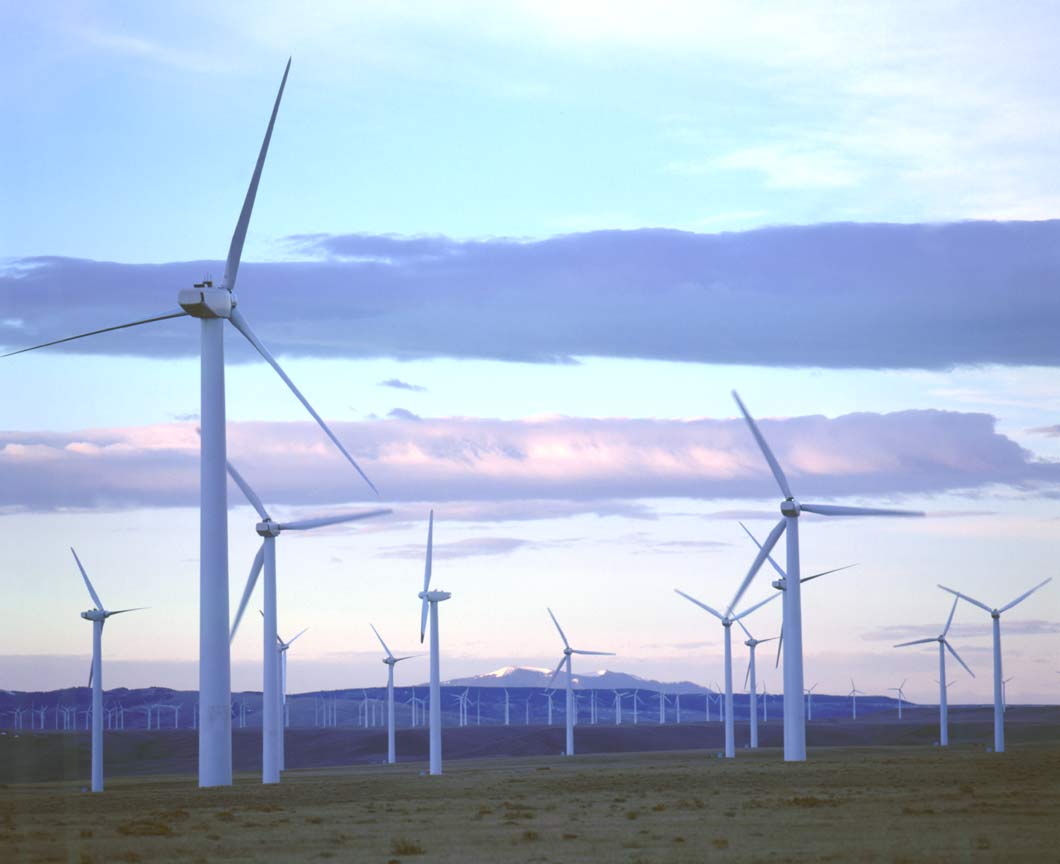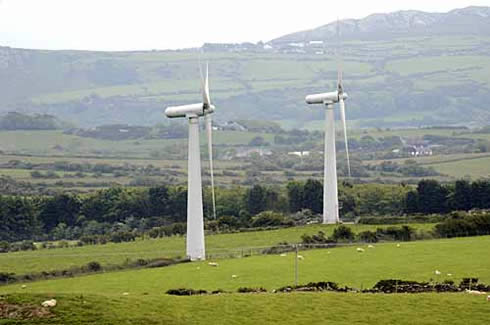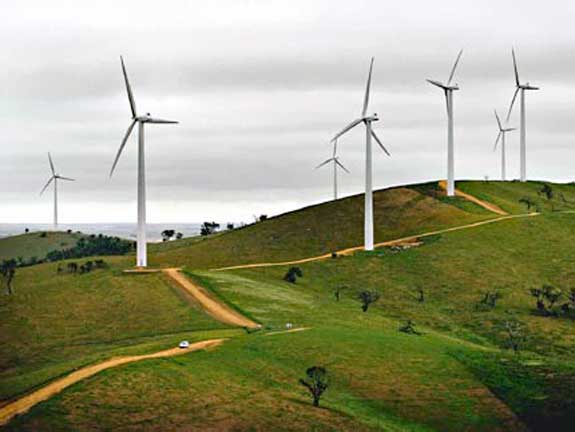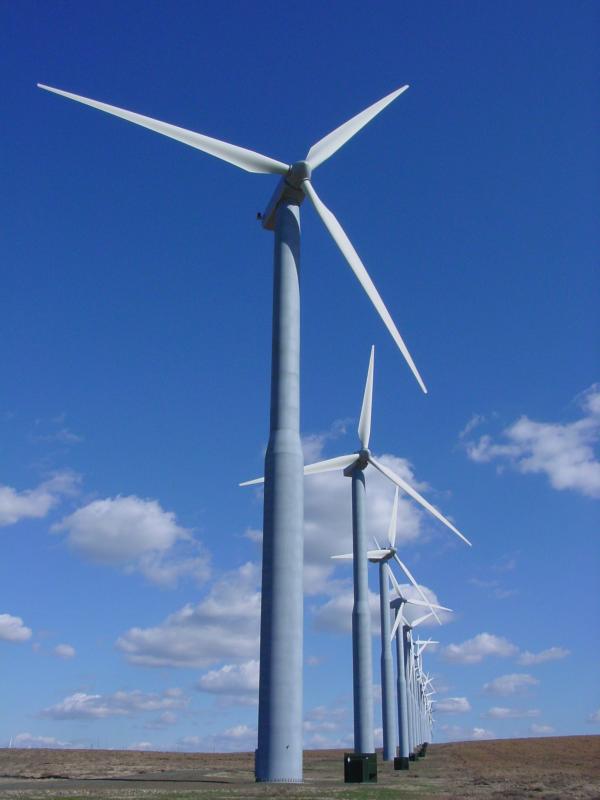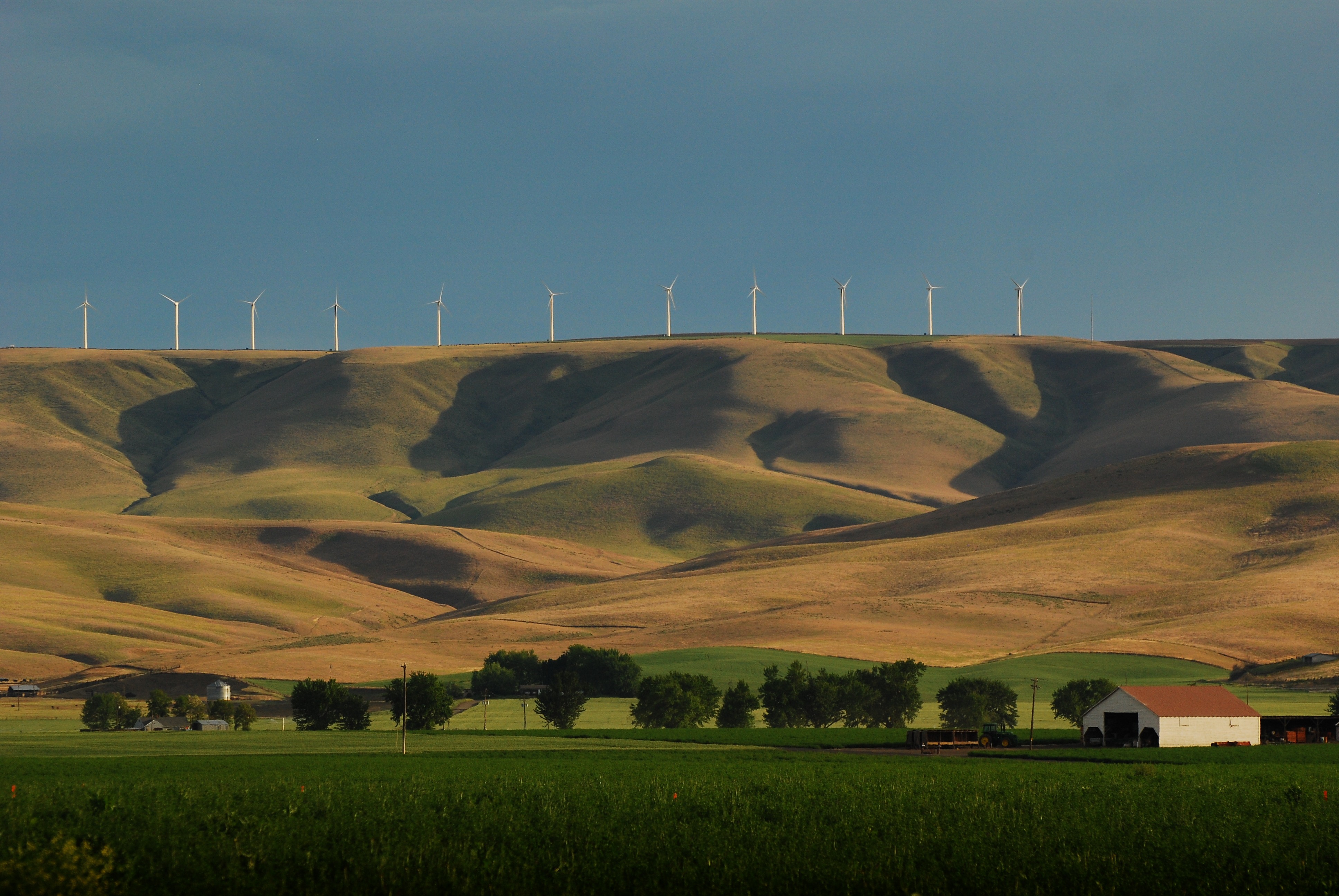|
Wind is the response of the atmosphere to uneven heating conditions. This creates pressure differences in the atmosphere causing the wind to blow from regions of high atmospheric pressure to low atmospheric pressure. The larger the pressure difference the greater the wind velocity. Air pressure represents the amount of atmosphere that is pressing down on the surface of the Earth at some point, as shown here:
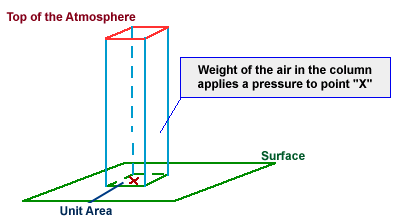 Pressure differences yield wind (bulk motion of the air):
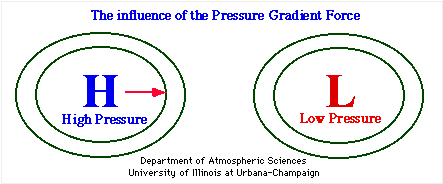
Local topography (mountains) can enhance
or restrict the natural wind flow
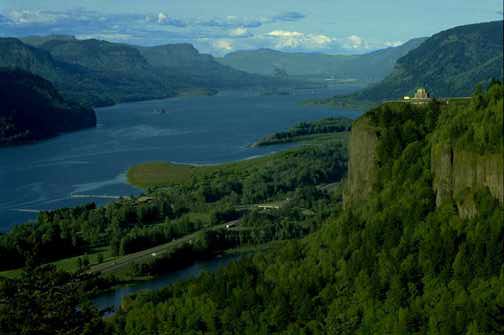 Large scale patterns are thus setup by the interplay of the locations of high and low pressure systems and the topology of the land leading to places in the US that are on average significantly windier than other locations. The overall capacity, in megawatts, in the US is large. We will assess this capacity later. While wind is certainly a renewable energy source, it is also an erratic one. In any one small area, the wind is likely to blow for only a small fraction of a 24 hour day. Thus best wind farm efficiency would be achieved by a large-scale deployment of individual small wind farms but over a very large area. For the West coast of the US, this would mean offshore facilities, sparsely populated, from Washington to California. At any given time, the wind will be blowing somewhere in that overall geography. Because of the intermittent nature of wind power, energy storage is probably more critical for wind power than for any other form of alternative energy in that it would be ideal to be able to charge up an energy storage device when the wind is blowing and then recover that energy when the wind is not blowing. In general, all current wind farms are not designed this way, but instead feed directly into the grid.
Physical Basics of Wind Energy
For average atmospheric conditions of density and moisture content, the power per square meter on a wind turbine is equal to
for a wind speed of 10 meters per second (note that 1 m/s is approximately 2 mph). But this does not take into account windmill efficiency: Windmills cannot operate at 100% efficiency because the structure itself impedes the flow of the wind. The structure also exerts back pressure on the turbine blades as they act like an air foil (a wing on an airplane). In most all cases, the efficiency of the wind turbine depends on the actual wind speed. For the three blade design, the efficiency curve looks like this:
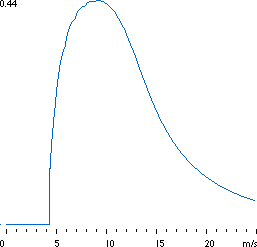 The maximum efficiency of 44% is reached in a 9 m/s wind (18 mph) and falls sharply at higher wind speeds. For a reasonable range of winds, the average efficiency is around 20%, Because the power goes as v3, there is no real need to optimize design for highest efficiency at highest wind speed because the power capacity in the wind will greatly exceed that which can be obtained by the generator.
Rotary type windmills have high torque and are useful for pumping water. High torque means efficient operation at low wind speeds.
High speed propeller types have low torque and are most efficient at high
rotational velocities Using an efficiency in the range of 40-45% yields our reference value for any future wind yield calculation:
A typical house uses about 25-50 KWH per day of electricity. Suppose that homeowner had a small (i.e., 1 meter radius) wind turbine and that at the location of the home the wind averaged 20 mph for 6 hours a day. How much electricity could be generated from this system:
However, supposed that you lived on the Oregon coast where say, you got a 40 mph wind on average for 3 hours per day in addition to the 6 hours of 20 mph wind
Basic Wind Router DesignTwo choices, horizontal axis or vertical axis. Horizontal axis has the advantage of more scalable design and higher efficiency. Vertical axis has the design feature that the generator could be located in the based of the structure and therefore very large generators could be built that would other wise fall down from the gravity load if placed up high on a horizontal axis turbine. 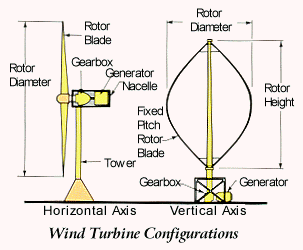
The detailed components of a horizontal wind turbine are shown below:
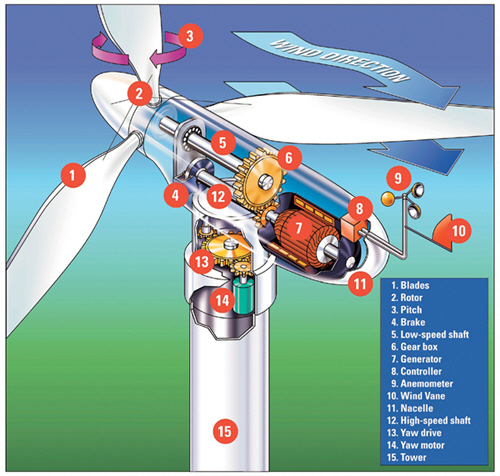 But the most important aspect of wind power is that on essentially the same horizontal footprint of the land, greater and greater rotor diameters have been constructed. This large evolution is graphically summarized below: 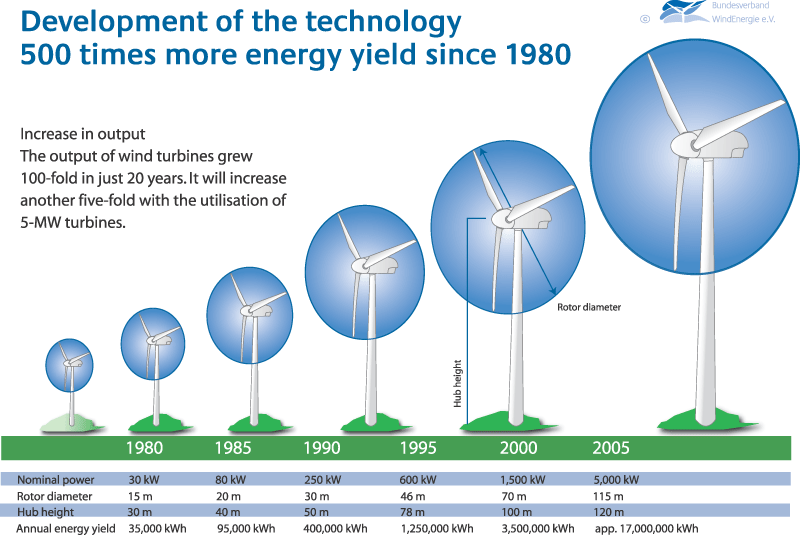 Note that research suggests it may be feasible to have unit capacity in a horizontal wind turbine as large as 20 MW. This would make a huge difference on overall wind scalability. But there are serious research issues with materials design and vertical turbulence (the rotor diameter would be about 250 meters) that need to be overcome first.
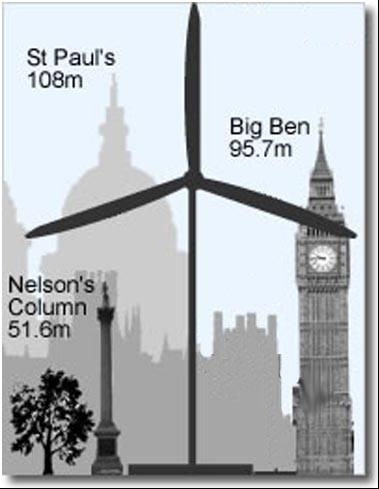 Some direct benefits from wind energy besides electricity generation include:
What follows is a small gallery of modern wind turbines and wind farms, Note that the land is mostly undisturbed and can be used for other purposes:
|
 What Makes the Wind Blow?
What Makes the Wind Blow?
 downslope winds off of mountain ranges represent ideal
locations for wind turbines as do narrow mountain passes
and river canyons such as the Columbia Gorge:
downslope winds off of mountain ranges represent ideal
locations for wind turbines as do narrow mountain passes
and river canyons such as the Columbia Gorge:
